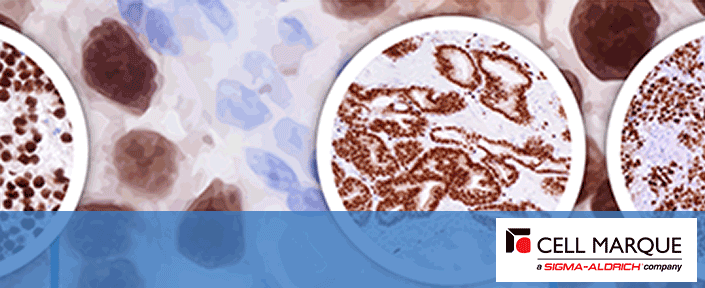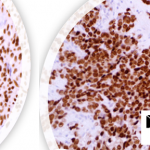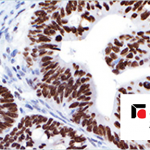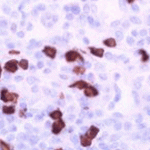Novel Genitourinary (GU) Markers from Cell Marque
Products are for professional/laboratory use only.
We are pleased to highlight the below Novel Genitourinary Markers from Cell Marque
NKX3.1 (EP356)
NKX3.1 is a transcription factor that is specific for prostate cancer. It is useful in distinguishing prostate from bladder and other non-prostate tissue in instances of metastasis. This nuclear marker has higher sensitivity and specificity than the already established PSA for prostate carcinoma.
ERG (EP111)
ERG is an important novel marker for the identification of vascular neoplasms due its strong andspecific nuclear expression in endothelial cells. ERG is strongly expressed in Kaposi sarcoma, which is usually associated with HHV-8, as well as other vascular tumors such as hemangioendothelioma and angiosarcoma. ERG has shown to be a valuable addition to an endothelial panel that includes Factor VIII, CD31, CD34, and D2-40. ERG is also helpful in identifying prostate adenocarcinoma. With its nuclear staining properties, ERG is able to differentiate prostate adenocarcinoma from low grade PIN and hyperplastic cells. ERG is a more specific marker than the established P504s for prostate cancer and should be used in a panel with PSA, P501s, P504s, and NKX3.1.
SALL4 (6E3)
SALL4 (6E3) is used in the identification of carcinomas of the gastrointestinal tract. It is seen to demonstrate high sensitivity for tumor cells in intratubular germ cell neoplasia, seminomas/ dysgerminomas, embroyonal carcinomas, and yolk sac tumor. Anti-SALL4 also stains teratomas and mononucleated trophoblastic cells in choriocarcinomas.
GLUT3 (polyclonal)
GLUT3 is valuable in the identification of germ cell tumors and differentiation non-germ cell tumors and neoplasms. In IHC studies conducted at Cell Marque using IHC, GLUT3 demonstrated
positive expression in testis and spermatozoa but had negative staining on brain tissue. GLUT3 is commonly used in panels with SALL4 and Oct-4.
Oct-4 (MRQ-10)
Oct-4 is a nuclear transcription factor that maintains and regulates pluripotency in embryonic stem and germ cells. It has a high sensitivity and specificity for seminoma/dysgerminoma, embryonal carcinoma, and the germ cell compontent of gonadoblastoma.
p57Kip2 (Kp10)
p57 is useful in the discrimination of complete hydatidiform mole (CHM) from partial hydatiform mole (PHM) and hydropic abortion.
Smoothelin (R4A)
Smoothelin is useful in distinguishing bladder muscualris mucosae (MM) from muscularis propria (MP) muscle bundles as it is exclusively observed in MP. Smoothlin’s staining pattern of MP (positive) and MM (negative) makes IHC an attractive diagnostic tool for the sometimes difficult task of staging bladder urothelial carcinoma.
Glypican-3 (1G12)
Glypican-3 (GPC3) is a glycosylphospatidyl inositol-anchored membrane protein, which may also be found in a secreted form. In the context of testicular germ cell tumors, GPC3 expression is up-regulated in certain histologic subtypes, specifically yolk sac tumors and choriocarcinoma.







